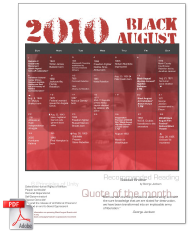Parellels of Street Harassment & Police Harassment
Stopping street harassment is going to take women and men. The problem is that it’s often viewed as a woman’s issue alone, which clearly neglects that the majority of those who harass are men. As a Black man, I seldom worry about going somewhere having a person make unwanted advances, touching my person, or live in the constant fear that any moment I could be accosted.
Or do I?
In hearing the testimonies of women enduring street harassment, I couldn’t help but hear the testimonies of young men of color regarding police harassment. While street harassment and police harassment have key difference, in many important ways they’re similar.* Here are three important parallels:
It’s everywhere- I live in New York City, the mecca of diversity. However, when you look at the stop-and-frisk numbers for the city you find that Black and Latino (predominantly male) residents are singled out. In 2009, of 576,394 stops and frisks were performed and 84 percent of them were on Blacks and Latinos. This is astronomically high, given that Black and Latino compose roughly 26 and 27 percent of the population respectively. The harassment that men of color often undergo via the police is a constant pressure. When walking through Harlem, I routinely see Black boys approached by undercover officers and forced to submit to “random searches.”
These searches are anything but random and serve to make young boys and men feel unsafe in their own communities. In the same way that young men of color are subject to an “invisible force” that disrupts their life without consent, young women of color feel the same. Somehow we live in communities where both men and women of color feel unsafe, displaced and harmed by harassment. Neither forms of harassment lead to safer communities or healthy relationships.
It’s illegal- When we look at the stop-and-frisk data from NYC we see the number on reason someone is stopped and frisked is “furtive movement.” Do you know what that is? Me neither. In fact, you’re not supposed to! The goal is to find any reason possible to stop and deter you from going where you’re going or living your life peacefully. Sound familiar?
Of course disproportionately stopping and frisking people is illegal, just as street harassment should be, but too many of us turn a blind eye to both. It’s going to take those that are the most and the least affected by street harassment and police harassment to come together to fight them. One sided action is not enough.
Knowledge is Powerful!
The Center for Constitutional Rights and Hollaback! have begun to carefully documenting the incidents of harassment. But we all must realize documentation is not enough! As organizers and members of communities, we need to create models that reduce levels of harassment, increase feelings of safety, and heal wounds within communities where gender violence, police violence, and all forms of violence have cracked the foundation.
Here in New York, I work with the Malcolm X Grassroots Movement which has developed as Know Your Rights campaign for communities of African descent. The People’s Self-Defense campaign is ultimately designed to give community members the tools to develop healthy communities that are safe spaces for all people, not a select few. Simply pointing at the problem will not cause it to change; instead strategic coalition building and intersectional approaches will be the proving ground for our collective to stop street harassment. The moment is ripe for collaboration and growth, but only if we can see the common harms and develop diverse responses to them.
*One of the first things I ever learned in organizing and doing work was “don’t do analogs.” While this is good advice, in some cases analogs are essential to creating buy-in from those who may not always see the “relevance” of a social problem. Admittedly there are differences between the two, but as an organizer I’m more interested in getting people to see the common ground so we can develop diverse solutions to these problems.
– Dr. L’Heureux Dumi Lewis, Assistant Professor of Sociology and Black Studies at the City College of New York
This post is part of the weekly blog series by male allies, originally posted at www.stopstreetharassment.org.
http://www.stopstreetharassment.org/2011/05/parellels-of-street-harassment-police-harassment/
-
Victoria rodriquez

















